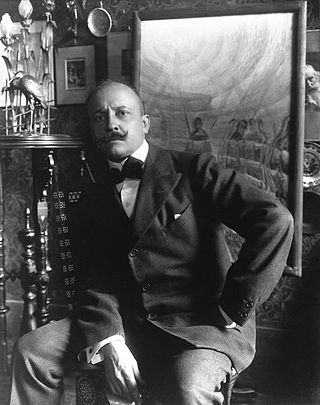
Filippo Tommaso Emilio Marinetti was an Italian poet, editor, art theorist, and founder of the Futurist movement. He was associated with the utopian and Symbolist artistic and literary community Abbaye de Créteil between 1907 and 1908. Marinetti is best known as the author of the first Futurist Manifesto, which was written and published in 1909, and as a co-author of the Fascist Manifesto, in 1919.

Grazia Maria Cosima Damiana Deledda, also known in Sardinian language as Gràssia or Gràtzia Deledda, was an Italian writer who received the Nobel Prize for Literature in 1926 "for her idealistically inspired writings which with plastic clarity picture the life on her native island [i.e. Sardinia] and with depth and sympathy deal with human problems in general". She was the first Italian woman to receive the prize, and only the second woman in general after Selma Lagerlöf was awarded hers in 1909.
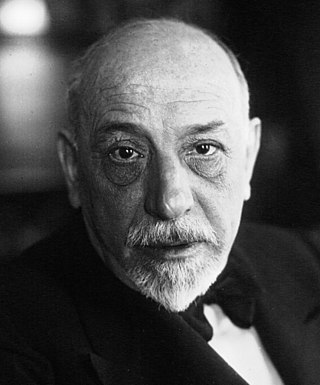
Luigi Pirandello was an Italian dramatist, novelist, poet, and short story writer whose greatest contributions were his plays. He was awarded the 1934 Nobel Prize in Literature "for his bold and ingenious revival of dramatic and scenic art" Pirandello's works include novels, hundreds of short stories, and about 40 plays, some of which are written in Sicilian. Pirandello's tragic farces are often seen as forerunners of the Theatre of the Absurd.

Giuseppe Ungaretti was an Italian modernist poet, journalist, essayist, critic, academic, and recipient of the inaugural 1970 Neustadt International Prize for Literature. A leading representative of the experimental trend known as Ermetismo ("Hermeticism"), he was one of the most prominent contributors to 20th century Italian literature. Influenced by symbolism, he was briefly aligned with futurism. Like many futurists, he took an irredentist position during World War I. Ungaretti debuted as a poet while fighting in the trenches, publishing one of his best-known pieces, L'allegria.

Margherita Sarfatti was an Italian journalist, art critic, patron, collector, socialite, and prominent propaganda adviser of the National Fascist Party. She was Benito Mussolini's biographer as well as one of his mistresses.
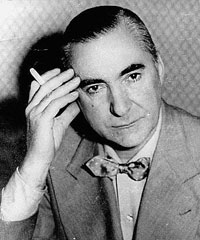
Curzio Malaparte, born Kurt Erich Suckert, was an Italian writer, filmmaker, war correspondent and diplomat. Malaparte is best known outside Italy due to his works Kaputt (1944) and The Skin (1949). The former is a semi-fictionalised account of the Eastern Front during the Second World War and the latter is an account focusing on morality in the immediate post-war period of Naples.

Alberto Pincherle, known by his pseudonym Alberto Moravia, was an Italian novelist and journalist. His novels explored matters of modern sexuality, social alienation and existentialism. Moravia is best known for his debut novel Gli indifferenti and for the anti-fascist novel Il conformista, the basis for the film The Conformist (1970) directed by Bernardo Bertolucci. Other novels of his adapted for the cinema are Agostino, filmed with the same title by Mauro Bolognini in 1962; Il disprezzo, filmed by Jean-Luc Godard as Le Mépris ; La noia (Boredom), filmed with that title by Damiano Damiani in 1963 and released in the US as The Empty Canvas in 1964 and La ciociara, filmed by Vittorio De Sica as Two Women (1960). Cédric Kahn's L'Ennui (1998) is another version of La noia.
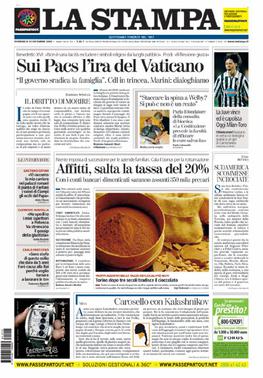
La Stampa is an Italian daily newspaper published in Turin with an average circulation of 87,143 copies in May 2023. Distributed in Italy and other European nations, it is one of the oldest newspapers in Italy. Until the late 1970s and early 1980s, when the country underwent a nationalization process, La Stampa and Corriere della Sera were not real national daily newspapers, as their geographical area of circulation was mostly limited to Piedmont for La Stampa and Lombardy for Corriere della Sera; thus, both papers shared a readership that was linked to its place of residence and its social class, mostly from the industrialist class and financial circles. La Stampa has "historically" been Turin's newspaper of record. It is considered one of Italy's leading national newspapers alongside Corriere della Sera, la Repubblica, Il Sole 24 Ore, and Il Messaggero.

Italian fascism, also classical fascism and Fascism, is the original fascist ideology, which Giovanni Gentile and Benito Mussolini developed in Italy. The ideology of Italian Fascism is associated with a series of political parties led by Mussolini: the National Fascist Party (PNF), which governed the Kingdom of Italy from 1922 until 1943, and the Republican Fascist Party (PFR), which governed the Italian Social Republic from 1943 to 1945. Italian fascism also is associated with the post–war Italian Social Movement (MSI) and later Italian neo-fascist political organisations.

Giovanni Agnelli was an Italian businessman who founded the Fiat S.p.A. car manufacturing in 1899.

Massimo Bontempelli was an Italian poet, playwright, novelist and composer. He was influential in developing and promoting the literary style known as magical realism.
Boris Furlan was a Slovenian jurist, philosopher of law, translator and liberal politician. During World War II, he worked as a speaker on Radio London, and was known as "London's Slovene voice". He served as a Minister in the Tito–Šubašić coalition government. In 1947, he was convicted by the Yugoslav Communist authorities at the Nagode Trial.

Italian nationalism is a movement which believes that the Italians are a nation with a single homogeneous identity, and therefrom seeks to promote the cultural unity of Italy as a country. From an Italian nationalist perspective, Italianness is defined as claiming cultural and ethnic descent from the Latins, an Italic tribe which originally dwelt in Latium and came to dominate the Italian peninsula and much of Europe. Because of that, Italian nationalism has also historically adhered to imperialist theories. The romantic version of such views is known as Italian patriotism, while their integral version is known as Italian fascism.
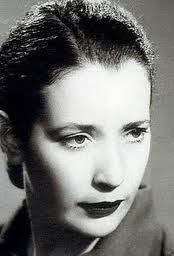
Anna Maria Ortese was an Italian author of novels, short stories, poetry, and travel writing. Born in Rome, she grew up between southern Italy and Tripoli, with her formal education ending at age thirteen. Her first book, Angelici dolori, was issued in 1937. In 1953 her third collection, Il mare non bagna Napoli, won the coveted Viareggio Prize; thereafter, Ortese's stories, novels, and journalism received many of the most distinguished Italian literary awards, including the Strega and the Fiuggi. Although she lived for many years in Naples following the Second World War, she also resided in Milan, in Rome, and for most of the last twenty years of her life in Rapallo. L'iguana, Ortese’s best-known work in English translation, was published in 1987 as The Iguana by the American literary press McPherson & Company. As of 2023, what she considered as her most important work, the novel Il porto di Toledo (1975), had not been translated into English yet.

L'Asino was an Italian magazine of political satire founded in Rome in 1892, by Guido Podrecca (1865–1923) and Gabriele Galantara (1867–1937), a former mathematics student, designer and cartoonist, both with a socialist background. The two took the pseudonyms "Goliardo" (Podrecca) and "Ratalanga" (Galantara), and with these nicknames signed the outputs of the weekly. The magazine's title was from a saying of Francesco Domenico Guerrazzi that said that "the donkey is like the people: useful, patient and stubborn", which became the subtitle and the motto of the editors.
Solaria was a modernist literary magazine published in Florence, Italy, between 1926 and 1936. The title is a reference to the city of sun. The magazine is known for its significant influence on young Italian writers. It was one of the publications which contributed to the development of the concept of Europeanism.
Mario Pannunzio was an Italian journalist and politician. As a journalist he was the director in charge of the daily newspaper Risorgimento Liberale in the 1940s and of the weekly political magazine Il Mondo in the 1950s. As a politician he was a co-founder of the revived Italian Liberal Party in the 1940s and then of the Radical Party in 1955.
Il Marzocco was an Italian language weekly literary and art magazine which was published in Florence, Italy, between 1896 and 1932. The title was chosen by Gabriele D'Annunzio which was a reference to the symbol of the ancient Republic of Florence and also, of the popular rule. The magazine covered articles on a wide range of subjects such as women's rights and political events. Its subtitle was periodico settimanale di letteratura e d'arte.
Critica fascista was a biweekly cultural magazine which was founded and edited by Giuseppe Bottai in Rome, Italy. The magazine existed during the Fascist rule in the country from 1923 to 1943. Over time it became one of the most significant publications of the fascist period in Italy.

Il Baretti was a monthly literary magazine which was one of the publications launched and edited by Piero Gobetti. The magazine was published in Turin in the period between 1924 and 1928. The title was a reference to Giuseppe Baretti, who was an author in the eighteenth century, an exile and pre-romantic pilgrim.














